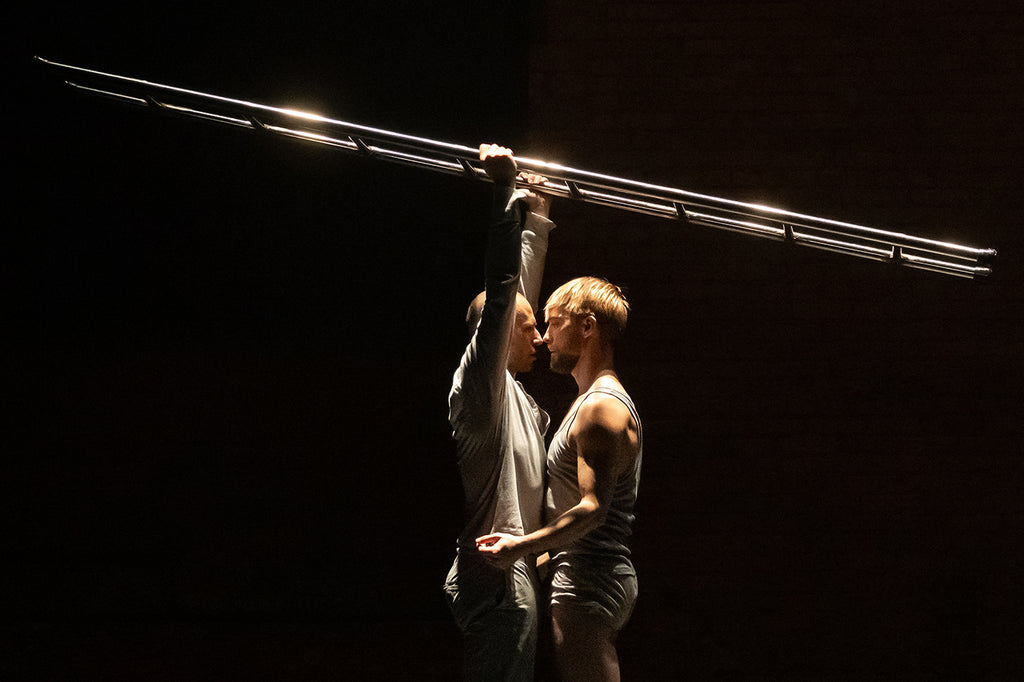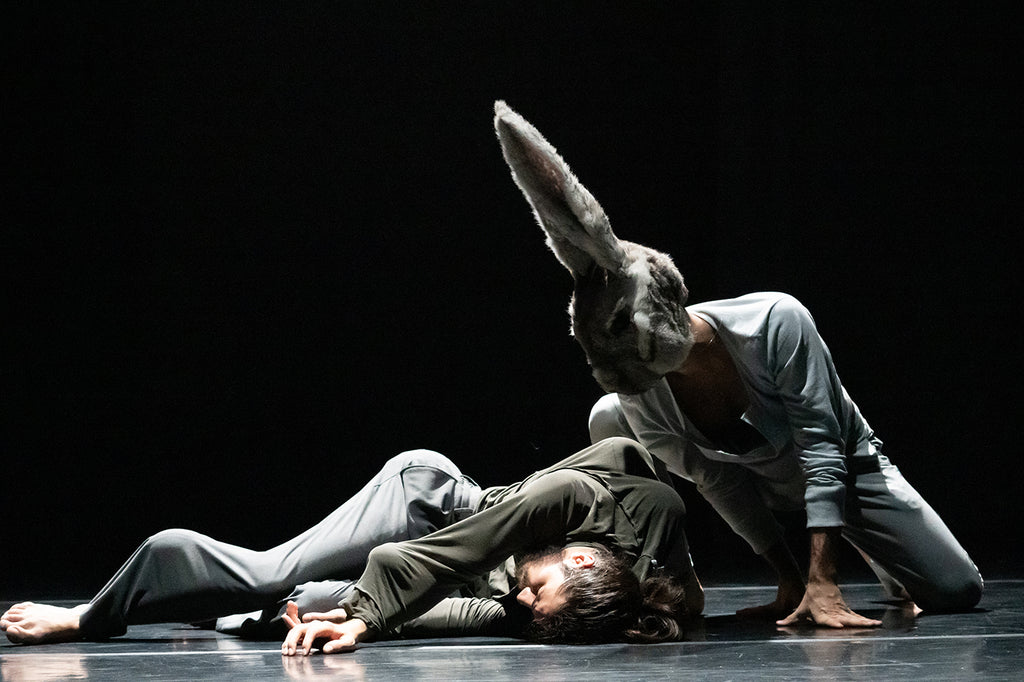Damiano Artale enters wearing a large furry rabbit head and carries a bunch of blue balloons over to Lidberg, lying prone. He ties them to Lidberg’s wrists and ankles and picks Lidberg up, floating him in arabesque around the stage to the sound of solemn strings.
Lidberg trained at the Royal Swedish Ballet School and was artistic director of Dance Dance Theatre in Copenhagen until 2022. But he is also an accomplished filmmaker who excels in imagistic storytelling. “Rabbits,” benefits from Lidberg’s sensitive combination of these skill sets, creating a suspension of disbelief built from both aesthetic beauty of the movement vocabulary and the spectrum of emotions the solos and duets evoke.
Children’s games are always the most terrifying—take for example, hide-and-seek—and Lidberg leans into these concepts of playacting and shapeshifting. Smko and Lidberg hop and leapfrog around the stage before donning identical, clown-like rabbit masks to what sounds like a demonic carnival. Artale, in the sinister rabbit head, always seems to be lurking around the edges, while Thomas, as a mother or caregiver, is ever interrupting to cart away props that have gone too far or clean up messes. They are presumably boys at play but later, those same hops and hips turn into a sexy, silly dance for the stuffed rabbit and a bizarre routine, mirrored in Jason Carpenter’s projection of the rabbit man.











comments